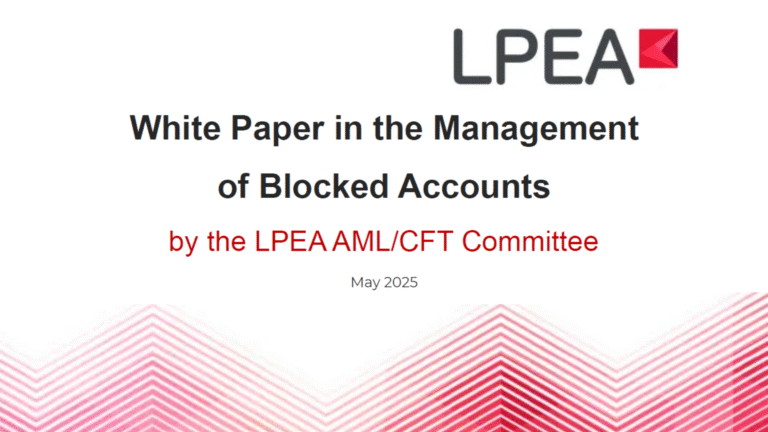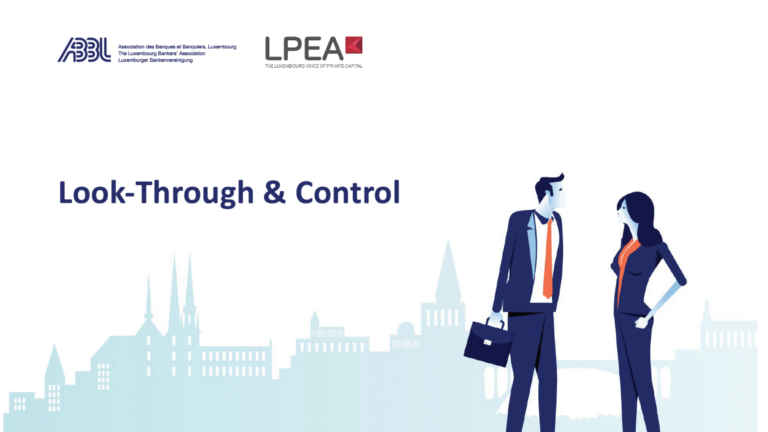How is the European Union’s Mandatory Disclosure Regime affecting the Private Equity sector?
by Renaud Labye, Associate Partner, Private Equity Transfer Pricing, Tax Advisory, EY Luxembourg; and Pamela Alvarado, Operating Model Effectiveness – Transfer Pricing, Tax Advisory, EY Luxembourg
Background
Mandatory Disclosure Regime (“MDR”) refers to the directive adopted on 25 May 2018 by the Council of the European Union (the “Directive” or “DAC 6” – for Directive on Administrative Cooperation) which requires “intermediaries” to report to their local tax authorities cross-border arrangements considered by the EU as potentially tax aggressive. An arrangement is ‘cross-border’ when it concerns either more than one Member State or a Member State and a third country.
The question as to what impact the MDR is having on Private Equity (“PE”) companies is today, unfortunately, not one with a straightforward answer. Some clarification will come when the law implementing MDR has been voted in Luxembourg, but this law may be a bit vague and leave some current questions unaddressed. Full clarity is therefore only likely to come with practical market experience, after the law has been voted and the first reporting period is over.
All this brings uncertainty and risk, which is not helpful to any business! In the case of MDR, the associated risks relate mainly to non-compliance and resulting financial penalties. The main reasons for not complying may be (i) a lack of understanding of the requirements and (ii) an overestimation of the administrative burden that comes with MDR (and resulting delay to implement the necessary actions). Indeed, some professionals may consider that the MDR requirements are only relevant for tax advisors and law firms. Others may consider those requirements are yet another layer of administrative burden for which they don’t have time, or that they will only become mandatory once the regime has been voted into Luxembourg law. Finally, some professionals may also think that they have plenty of time to comply as those reporting obligations will only become mandatory in 2020.
Unfortunately, all those assumptions are misjudged! MDR will impact all “intermediaries” in the EU, whether they are tax advisors, law firms or consulting firms, and even potentially banks, trusts or PE houses, and taxpayers themselves.
Who needs to report and when?
The obligation lies with the “intermediaries” in the first place. If several intermediaries are involved in the same arrangement – unless the national law implementing DAC 6 is more restrictive – “intermediary shall be exempt from filing the information if it has proof, in accordance with national law, that the same information has been filed in another Member State”[1](i.e. by another intermediary).
Lastly, in the absence of a relevant intermediary (which would be the case if, for instance, the intermediaries are not located in the EU), reporting obligations lie with the taxpayer.
It should also be noted that, when the intermediary is a law firm subject to the obligation of professional secrecy, it will most probably be exempt from the reporting requirement. In those cases, the taxpayer will also have to report.
Consequently, if a PE house has an active presence, where its employees are involved in the design or implementation of a reportable structure, it will likely be considered as intermediary and captured by MDR! Notwithstanding the above, a PE house could also have the obligation to report as a taxpayer if, for instance, the intermediary has legal professional privilege. Finally, a PE house might want to know and monitor what and how transactions are going to be reported.
The reporting obligation will not become effective before 1st July 2020. The Directive has however a retroactive effect and all arrangements where the first step was performed after 25 June 2018 will have to be reported.
Once reported, information on the arrangements will automatically be shared with the competent authorities of other Member States, through a repository that the Commission is in the process of creating. This Directive has two main goals: (i) inform tax authorities on the types of transaction / structure put in place and (ii) guide companies towards a change of behavior where intermediaries will be discouraged from putting in place reportable structures.
In case of non-reporting, the Directive stipulates that each Member State will lay down applicable penalties under local law, which shall be “effective, proportionate and dissuasive”[2]
, meaning that we will need to wait until the Luxembourg legislation implementing DAC 6 is drafted to know precisely what the risks are. For information and comparison, Poland has already implemented the Directive in its local legislation and imposes fines in some cases. Those fines can amount up to PLN 10 or 20 mio (approximately respectively EUR 2.35 and 4.7 mio).
It is therefore key for all PE houses to determine whether they are an intermediary and to start monitoring their transactions to be sure they correctly identify all those which need to be reported. To do so, PE houses need, as soon as possible, (i) to get a good understanding of the requirements, (ii) to correctly analyze each new transaction to determine if it is reportable or not and, finally, (iii) to create a process for continued analysis, monitoring and coordination with intermediaries to report all potentially reportable transactions!
What should be reported?
Cross-border arrangements should be reported if they contain at least one of the indicators (called “hallmarks”) set out by the Directive. According to the Council of the European Union, those hallmarks, when applicable to a cross-border arrangement, will highlight a potential risk of tax avoidance. Some of those hallmarks generate reporting obligations by themselves whilst others only require reporting when they fulfil the “Main Benefit Test”. This test is satisfied “if it can be established that the main benefit or one of the main benefits which, having regard to all relevant facts and circumstances, a person may reasonably expect to derive from an arrangement is the obtaining of a tax advantage”[3]
Some of those hallmarks are more relevant for PE houses. For instance, one specific hallmark (hallmark C1a) targets deductible cross-border payments made to an associated enterprise that is not resident in any tax jurisdiction for tax purposes. For instance, this would be the case (such as exists in many PE structures) when a Luxembourg company is paying interest to a transparent fund/limited partnership. This hallmark is not subject to the Main Benefit Test, meaning there is a reporting obligation irrespective of tax being one of the main benefits. This being said, it may also be worth comparing potential structures on basis of the associated reporting obligations and considering structures where the payment is not cross-border (i.e. made to a Luxembourg fund vehicle). Another hallmark that could potentially impact many PE houses’ transactions is the hallmark E3 that likely also concerns liquidations (unless the shareholder is in same country as the liquidated company).
Conclusion:
MDR will impact many Luxembourg structures and PE houses. All companies that are potentially impacted should therefore (i) get a good understanding of MDR obligations, (ii) adopt an easy-to-use but effective internal procedure to identify and monitor arrangements to be reported and (iii) install and utilize an efficient tool to save information and monitor what needs to be reported and by whom, as well as reporting deadlines. And all this as soon as possible!
[1] See Article 1 (2) 4 of the Directive
[2] See Article 1 (6) of the Directive
[3] See Annex IV Hallmarks of the Directive






